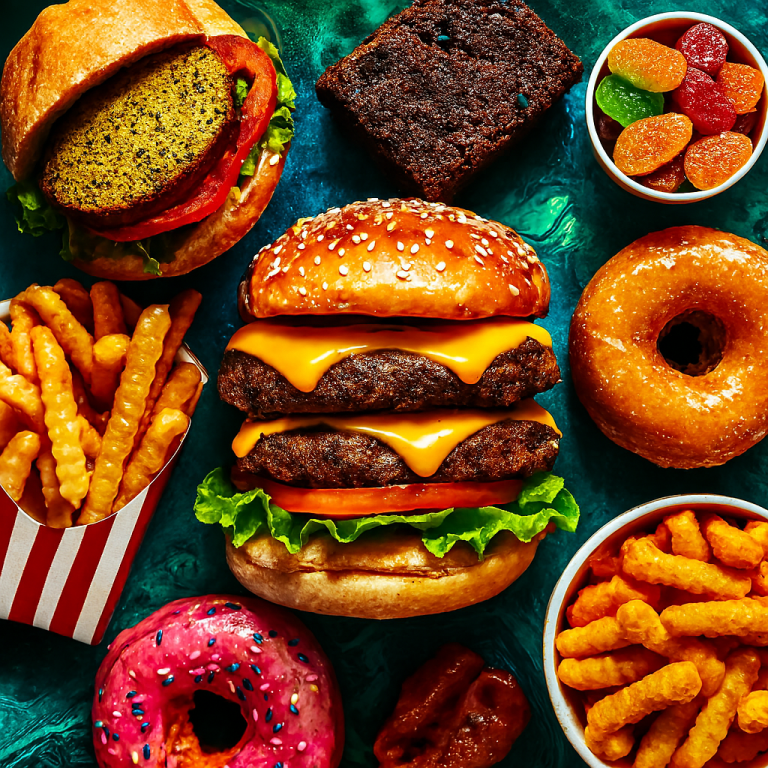
The Being Fat Psychology Powerful Judgement Of All Including You
BEING FAT – HOW THE WORLD SEES YOU BEFORE YOU SEE YOURSELF
INTRODUCTION – FATNESS AS A PSYCHOLOGICAL LANDSCAPE
Being fat is not just a physical condition. It is a psychological terrain shaped by visibility, misrepresentation, and emotional labor. Fat people are often seen before they are heard, judged before they are known, and used before they are understood. The body becomes a symbol that others project onto, often without consent. This projection distorts identity, erodes self-trust, and fragments emotional continuity. Fatness is not just experienced—it is interpreted by others in ways that rarely reflect the truth. The psychological toll begins early and accumulates across every domain of life. From healthcare to fashion, from friendship to employment, fatness is treated as a flaw rather than a fact.
I hated life when I was fat and still deal with the shame of being fat and still thinking I am fat in my mind!

THE MIRROR IS NOT NEUTRAL
Mirrors do not just reflect—they interpret. For fat individuals, the mirror often becomes a site of emotional conflict. It reflects not only the body but the accumulated gaze of others. This gaze carries judgment, shame, and distortion. The mirror becomes a battleground between self-perception and societal expectation. Fat people learn to scan themselves for flaws rather than presence. This scanning erodes self-compassion and reinforces internalized stigma. The mirror is not neutral—it is shaped by culture, media, and memory. It becomes a tool of surveillance rather than affirmation. Reclaiming the mirror requires emotional labor and symbolic reframing. Fatness must be seen as form, not failure. The mirror must be taught to reflect truth, not trauma.
THE PSYCHOLOGY OF MIRROR PERCEPTION
| Mirror Element | Emotional Response | Psychological Outcome |
|---|---|---|
| Body size | Shame or pride | Identity reinforcement |
| Facial expression | Self-judgment | Mood modulation |
| Clothing fit | Discomfort or ease | Symbolic coherence |
| Posture | Confidence or collapse | Somatic feedback |
| Eye contact | Avoidance or engagement | Emotional visibility |
THE GAZE IS NOT INNOCENT
Fat people are looked at differently. The gaze they receive is often loaded with assumptions, stereotypes, and unsolicited advice. This gaze is not passive—it is performative. It communicates judgment, pity, or mockery without words. Fat individuals learn to anticipate this gaze and adjust their behavior accordingly. They shrink emotionally even when they cannot shrink physically.
The gaze becomes a form of control, shaping how fat people move, speak, and dress. It is not just about being seen—it is about being interpreted. This interpretation often erases complexity and reduces the person to a caricature. The gaze is not innocent—it is a tool of social regulation. Reclaiming visibility requires confronting the gaze, not avoiding it. Fatness must be seen as presence, not provocation.
THE PSYCHOLOGY OF SOCIAL GAZE
| Gaze Type | Implied Message | Emotional Impact |
|---|---|---|
| Prolonged stare | Judgment or curiosity | Anxiety or shame |
| Side glance | Discomfort or dismissal | Emotional withdrawal |
| Avoidance | Erasure | Identity fragmentation |
| Pitying look | Infantilization | Loss of agency |
| Surveillance gaze | Control | Behavioral modification |
CLOTHING AS ARMOR AND EXPOSURE
For fat individuals, clothing is not just style—it is strategy. Every outfit becomes a negotiation between visibility and protection. Clothing can serve as armor, shielding the wearer from judgment and unwanted attention. It can also become a site of exposure, where fit and fabric betray the body’s shape. Fat people often dress to deflect rather than express. This deflection reinforces the idea that their bodies must be hidden or corrected.
The fashion industry rarely designs with fat bodies in mind, creating scarcity and shame. Clothing becomes a daily reminder of exclusion and adaptation. It is not just about what fits—it is about what affirms. Fatness is often treated as a design flaw rather than a design reality. Reclaiming clothing means reclaiming space, style, and self. The body deserves to be dressed, not disguised.
THE PSYCHOLOGY OF FAT CLOTHING EXPERIENCE
| Clothing Factor | Emotional Reaction | Symbolic Meaning |
|---|---|---|
| Limited sizing | Frustration | Institutional exclusion |
| Tight fit | Self-consciousness | Body surveillance |
| Loose fit | Concealment | Emotional protection |
| Bold colors | Visibility | Identity assertion |
| Adaptive styling | Creativity | Self-expression |
EMPLOYMENT AS FILTERED ACCESS
Fat people face unique psychological challenges in the workplace. Their bodies are often read as indicators of laziness, incompetence, or poor discipline. These assumptions are rarely spoken but frequently acted upon. Fat individuals may be passed over for promotions, excluded from leadership roles, or judged more harshly for mistakes. The workplace becomes a site of filtered access, where merit is distorted by bias. Fat employees often feel the need to overperform to compensate for perceived deficits.
This overperformance leads to burnout and emotional exhaustion. The body becomes a liability rather than a neutral fact. Professional identity is shaped not just by skill but by silhouette. Fatness is treated as a problem to be managed, not a person to be respected. Reclaiming professional space requires confronting bias, not just excelling. The workplace must be taught to see competence beyond contour.
THE PSYCHOLOGY OF FATNESS IN EMPLOYMENT
| Workplace Bias | Behavioral Consequence | Emotional Cost |
|---|---|---|
| Appearance judgment | Overcompensation | Burnout |
| Role stereotyping | Limited opportunity | Identity suppression |
| Health assumptions | Surveillance | Anxiety |
| Social exclusion | Isolation | Loneliness |
| Promotion bias | Stagnation | Self-doubt |
HEALTHCARE AS CONDITIONAL CARE
Fat people often enter healthcare spaces already bracing for judgment. Their bodies are frequently treated as the root cause of every symptom, regardless of context. This reductionist approach erases nuance and undermines diagnostic accuracy. Providers may focus on weight loss rather than addressing the actual condition, delaying or denying appropriate care. Fat patients report being dismissed, misdiagnosed, or told to “come back thinner” before receiving treatment. This conditional care creates a psychological barrier to seeking help.
The medical setting becomes a place of surveillance rather than healing. Fatness is framed as pathology, not diversity. The emotional toll includes shame, avoidance, and distrust. Fat individuals may internalize the belief that their pain is deserved or self-inflicted. Healthcare should be a site of restoration, not punishment. Reclaiming medical dignity requires systemic change and emotional repair.
THE PSYCHOLOGY OF FATNESS IN HEALTHCARE
| Medical Bias | Patient Experience | Emotional Consequence |
|---|---|---|
| Weight-first diagnosis | Misdiagnosis | Distrust and fear |
| Diet-centric advice | Deflection from symptoms | Shame and avoidance |
| Equipment limitations | Physical exclusion | Embarrassment |
| Provider tone | Moral judgment | Identity erosion |
| Delayed care | Health deterioration | Emotional exhaustion |
FRIENDSHIP AS CONDITIONAL BELONGING
Fat individuals often navigate friendships with an undercurrent of conditional acceptance. They may be included socially but excluded emotionally. Friends might joke about weight, offer unsolicited diet advice, or use fatness as a punchline. These microaggressions accumulate, creating emotional distance and self-monitoring. Fat people may feel they must be extra funny, extra helpful, or extra accommodating to “earn” their place.
This performance of likability masks deeper feelings of isolation and insecurity. True friendship should offer safety, not surveillance. Yet many fat individuals report feeling tolerated rather than celebrated. The body becomes a barrier to intimacy, even in platonic relationships. Fatness is treated as a flaw to overlook, not a fact to respect. Reclaiming friendship means demanding emotional equity, not just social proximity. Belonging must be unconditional to be real.
THE PSYCHOLOGY OF FATNESS IN FRIENDSHIP
| Social Dynamic | Fat Person’s Response | Emotional Impact |
|---|---|---|
| Weight jokes | Forced laughter | Internalized shame |
| Diet talk | Silence or withdrawal | Emotional distancing |
| Group photos | Strategic positioning | Body anxiety |
| Compliments on weight loss | Conditional praise | Identity confusion |
| Exclusion from activities | Self-blame | Loneliness |
MEDIA AS DISTORTION FIELD
The media rarely portrays fat people as full humans. They are cast as villains, comic relief, cautionary tales, or redemption arcs. Fatness is framed as a problem to solve, not a reality to understand. Characters are often defined solely by their size, erasing complexity and emotional depth. This distortion shapes public perception and internal identity. Fat viewers rarely see themselves represented with dignity, agency, or nuance.
The absence of authentic fat narratives reinforces shame and invisibility. When fatness is shown, it is often paired with humiliation, transformation, or pity. These portrayals teach society to mock, fear, or fix fat bodies. They also teach fat individuals to expect rejection, ridicule, or erasure. Media should reflect reality, not reinforce bias. Reclaiming representation means demanding stories that honor fat lives as whole, not broken.
THE PSYCHOLOGY OF FATNESS IN MEDIA
| Media Trope | Narrative Message | Psychological Effect |
|---|---|---|
| Comic relief | Fatness equals humor | Dehumanization |
| Weight loss arc | Fatness as failure | Conditional worth |
| Villain archetype | Fatness as threat | Fear and stigma |
| Sidekick role | Fatness as support | Identity minimization |
| Absence of fat leads | Fatness as unworthy | Invisibility |
INTERNALIZED STIGMA AS EMOTIONAL EROSION
Fat people often internalize the messages they receive from society. These messages say they are lazy, unattractive, unhealthy, or unworthy. Over time, these beliefs become embedded in self-concept. Internalized stigma leads to self-monitoring, self-censorship, and self-punishment. Fat individuals may avoid mirrors, photos, intimacy, or ambition. They may believe they must change their bodies to deserve love, success, or rest.
This erosion of self-trust is not natural—it is learned. The emotional cost includes anxiety, depression, and chronic shame. Internalized stigma fragments identity and distorts emotional truth. It creates a split between the body and the self. Healing requires unlearning, reframing, and radical self-compassion. Fatness is not a flaw—it is a fact. The self must be reclaimed from the stories that were never true.

THE PSYCHOLOGY OF INTERNALIZED STIGMA
| Stigmatizing Belief | Internal Response | Emotional Outcome |
|---|---|---|
| “I’m lazy” | Overworking | Burnout |
| “I’m unattractive” | Avoidance of intimacy | Loneliness |
| “I’m unhealthy” | Fear of movement | Disconnection |
| “I’m unworthy” | Self-sabotage | Depression |
| “I must change” | Chronic dieting | Identity instability |
EMOTIONAL TAXATION ACROSS LIFE DOMAINS
Being fat carries an emotional tax that compounds across every domain of life. This tax includes vigilance, adaptation, and emotional labor. Fat individuals must constantly assess how they are perceived, whether they are safe, and how much space they are allowed. They navigate public transportation, seating, clothing, healthcare, and social spaces with strategic awareness. This constant calculation drains energy and erodes joy. The emotional tax is invisible to others but deeply felt by those who pay it. It affects mood, memory, and motivation.
Fat people often feel they must apologize for existing, even when they are silent. This taxation is not about the body—it is about the world’s response to it. Reclaiming emotional freedom means naming the cost and refusing to pay it in silence. Fatness should not require emotional debt.
THE PSYCHOLOGY OF EMOTIONAL TAXATION
| Life Domain | Adaptive Strategy | Emotional Cost |
|---|---|---|
| Public transport | Seat scanning | Anxiety |
| Clothing shopping | Brand avoidance | Shame |
| Healthcare visits | Preemptive defense | Exhaustion |
| Social events | Body monitoring | Disconnection |
| Dating and intimacy | Emotional shielding | Vulnerability avoidance |
FAMILY AS EARLY FRAMEWORK
Fatness is often first interpreted within the family. Parents, siblings, and relatives may comment on weight with concern, humor, or criticism. These early messages shape how fat individuals understand their bodies and their worth. Family can be a source of support, but also a site of surveillance. Comments about food, clothing, or appearance become emotional scripts that echo for decades. Fat children may be put on diets before they understand hunger. They may be praised for shrinking or shamed for growing.
These experiences create a framework of conditional love and bodily mistrust. The home becomes a place where the body is monitored, not celebrated. Emotional safety is compromised by the pressure to conform. Reclaiming family space requires rewriting these early scripts. Fatness must be seen as part of the person, not a problem to fix.
THE PSYCHOLOGY OF FATNESS IN FAMILY DYNAMICS
| Family Behavior | Internalized Message | Emotional Outcome |
|---|---|---|
| Food policing | “You can’t be trusted” | Shame and secrecy |
| Weight praise | “You’re better smaller” | Conditional self-worth |
| Public comments | “Your body is public” | Loss of privacy |
| Diet enforcement | “You must change” | Identity confusion |
| Silence on fatness | “We don’t talk about this” | Emotional isolation |
ROMANCE AS CONDITIONAL DESIRE
Fat individuals often experience romantic relationships through a lens of conditional desire. They may be fetishized, hidden, or excluded entirely. Attraction is filtered through cultural narratives that equate thinness with beauty and fatness with failure. Fat people may be told they are “brave” for dating or “lucky” to be loved. These comments reveal the underlying belief that fatness is incompatible with desirability. Intimacy becomes a negotiation between visibility and vulnerability. Fat individuals may hide their bodies, apologize for their size, or accept partners who treat them as projects.
The emotional toll includes insecurity, self-censorship, and fear of rejection. Romance should be a space of mutual celebration, not conditional tolerance. Reclaiming romantic dignity means demanding desire that honors the whole self. Fatness must be seen as part of beauty, not its opposite.
THE PSYCHOLOGY OF FATNESS IN ROMANTIC RELATIONSHIPS
| Romantic Dynamic | Fat Person’s Experience | Emotional Impact |
|---|---|---|
| Fetishization | Objectification | Loss of agency |
| Hidden relationships | Shame and secrecy | Identity fragmentation |
| Weight-based praise | Conditional affection | Emotional instability |
| Body avoidance | Fear of intimacy | Disconnection |
| Rejection due to size | Internalized unworthiness | Depression |
PUBLIC SPACE AS EMOTIONAL TERRITORY
Navigating public space as a fat person requires constant emotional calculation. Every chair, doorway, and glance becomes a potential site of judgment or exclusion. Fat individuals often scan environments for safety, fit, and visibility. They may avoid certain venues, transportation, or events to minimize discomfort. This vigilance creates emotional fatigue and spatial anxiety. Public space is not neutral—it is designed with thinness as the default. Fat bodies are treated as intrusions rather than participants. The psychological cost includes hyper-awareness, avoidance, and self-monitoring. Reclaiming public space means asserting the right to exist without apology. Fatness must be accommodated, not erased. The world must be redesigned to reflect all bodies, not just some.
THE PSYCHOLOGY OF FATNESS IN PUBLIC SPACE
| Spatial Challenge | Adaptive Behavior | Emotional Cost |
|---|---|---|
| Tight seating | Avoidance or squeezing | Shame and discomfort |
| Narrow pathways | Strategic movement | Anxiety |
| Public stares | Defensive posture | Emotional withdrawal |
| Venue exclusion | Self-censorship | Isolation |
| Clothing visibility | Hyper-awareness | Self-monitoring |
EDUCATION AS EARLY EXCLUSION
Fat children often experience school as a site of exclusion and ridicule. They may be bullied, ignored, or punished more harshly than their peers. Teachers may unconsciously reinforce bias by praising thinness or pathologizing fatness. Physical education becomes a public stage for humiliation rather than health. Fat students may be excluded from social groups, leadership roles, or classroom participation.
These experiences shape self-esteem, academic confidence, and emotional development. Education should be a space of growth, not shame. Yet for many fat children, it becomes a place of emotional injury. The psychological toll includes anxiety, avoidance, and identity suppression. Reclaiming educational dignity means confronting bias at every level. Fatness must be seen as part of diversity, not a disruption to it.

THE PSYCHOLOGY OF FATNESS IN EDUCATION
| School Experience | Fat Student’s Response | Emotional Outcome |
|---|---|---|
| Bullying | Withdrawal or masking | Trauma and fear |
| PE shaming | Avoidance of movement | Body disconnect |
| Teacher bias | Overcompensation | Burnout |
| Social exclusion | Isolation | Loneliness |
| Uniform issues | Clothing anxiety | Identity suppression |
MOVEMENT AS EMOTIONAL RECLAMATION
Fat people are often told they cannot move, should not move, or must move to change. Movement becomes a moral task rather than a joyful act. Exercise spaces are filled with surveillance, shame, and exclusion. Fat individuals may be mocked, stared at, or offered unsolicited advice. This erodes the connection between body and joy. Movement should be a celebration of presence, not a punishment for size.
Reclaiming movement means redefining its purpose. Fat people deserve to dance, stretch, swim, and rest without justification. Movement becomes a way to reconnect with the body, not escape it. The emotional benefit includes confidence, regulation, and pleasure. Fatness must be included in the language of movement. The body is not a problem—it is a participant.
THE PSYCHOLOGY OF FATNESS IN MOVEMENT
| Movement Barrier | Fat Person’s Experience | Emotional Outcome |
|---|---|---|
| Gym surveillance | Avoidance or masking | Shame and fear |
| Fitness stereotypes | Moral pressure | Anxiety |
| Clothing limitations | Restricted participation | Frustration |
| Unsolicited coaching | Loss of autonomy | Identity erosion |
| Joyful movement | Reconnection | Emotional healing |
VISIBILITY AS DISTORTION
Fat people are often hyper-visible and simultaneously unseen. Their bodies are noticed, commented on, and judged, yet their personhood is ignored. Visibility becomes a spotlight that distorts rather than illuminates. Fat individuals are read through a lens of stereotype, not nuance. They are seen as symbols—of excess, failure, or indulgence—rather than as full humans. This distortion affects how they are treated in public, in media, and in conversation. Visibility without recognition creates emotional dissonance.
Fat people may feel exposed but not understood, present but not acknowledged. The body becomes a screen onto which others project their fears and fantasies. This projection fragments identity and erodes emotional safety. Reclaiming visibility means demanding to be seen as whole, not as warning. Fatness must be viewed through clarity, not caricature.
THE PSYCHOLOGY OF DISTORTED VISIBILITY
| Visibility Type | Social Interpretation | Emotional Effect |
|---|---|---|
| Hyper-visibility | Spectacle or threat | Anxiety and shame |
| Selective attention | Body over personality | Identity erasure |
| Public commentary | Moral policing | Emotional withdrawal |
| Invisibility in media | Erasure | Loneliness |
| Reclaimed presence | Self-definition | Confidence and clarity |
LANGUAGE AS EMOTIONAL ARCHITECTURE
Words shape how fat people are understood—and how they understand themselves. Language around fatness is often medicalized, moralized, or mocked. Terms like “obese,” “overweight,” or “plus-size” carry clinical or euphemistic weight. These words rarely reflect lived experience. They create distance between the body and the self. Fat individuals may struggle to find language that affirms rather than erases.
Insults, jokes, and labels become emotional architecture—structures that shape identity and mood. Even compliments can reinforce stigma when framed around weight loss or transformation. Language is not neutral—it is formative. Reclaiming vocabulary means choosing words that honor complexity, dignity, and truth. Fatness must be described with care, not contempt. The right words can restore what the wrong ones have broken.
THE PSYCHOLOGY OF FAT LANGUAGE
| Word or Phrase | Implied Meaning | Emotional Impact |
|---|---|---|
| “Obese” | Medical pathology | Dehumanization |
| “Plus-size” | Euphemistic distancing | Identity confusion |
| “Fat” (reclaimed) | Neutral descriptor | Empowerment |
| “Weight loss success” | Conditional praise | Shame reinforcement |
| “Big-boned” | Deflection | Emotional masking |
EMOTIONAL LABOR AS DAILY COST
Fat people perform emotional labor constantly. They manage others’ discomfort, deflect unsolicited advice, and navigate spaces not built for them. This labor is invisible but exhausting. It includes smiling through judgment, educating others, and pretending not to notice exclusion. Fat individuals often feel responsible for making others feel comfortable with their size. This responsibility is unfair and unsustainable. Emotional labor becomes a survival strategy, not a choice. It affects relationships, work, and self-perception. The cost includes fatigue, resentment, and emotional depletion. Reclaiming energy means refusing to perform for others’ comfort. Fatness should not require constant explanation or apology. Emotional labor must be named, redistributed, and respected.
THE PSYCHOLOGY OF EMOTIONAL LABOR
| Labor Type | Social Expectation | Psychological Cost |
|---|---|---|
| Smiling through shame | Politeness | Emotional suppression |
| Educating others | Advocacy | Burnout |
| Deflecting comments | Grace under pressure | Identity erosion |
| Over-accommodating | Likability | Self-neglect |
| Masking discomfort | Social harmony | Chronic fatigue |
CULTURE AS BODY SCRIPT
Culture writes scripts for fat bodies—how they should behave, feel, and change. These scripts vary across geography, religion, and media but share a common theme: control. Fatness is framed as a deviation from the norm, a problem to solve, or a spectacle to consume. Cultural narratives often link body size to morality, discipline, and worth. These narratives shape how fat people are treated and how they treat themselves.
They influence parenting, education, fashion, and healthcare. Fat individuals may internalize these scripts, performing roles they never chose. Culture becomes a mirror that distorts rather than reflects. Reclaiming the body means rewriting the script. Fatness must be understood as part of cultural diversity, not a deviation from it. The body is not a failure—it is a fact.
THE PSYCHOLOGY OF CULTURAL BODY SCRIPTING
| Cultural Narrative | Expected Behavior | Emotional Consequence |
|---|---|---|
| “Thin is healthy” | Dieting and restriction | Anxiety and guilt |
| “Fat is lazy” | Overcompensation | Burnout |
| “Weight equals worth” | Self-monitoring | Identity suppression |
| “Transformation is success” | Constant change | Emotional instability |
| “Fat is funny” | Forced humor | Dehumanization |
BEING MISUNDERSTOOD AS EMOTIONAL EXILE
Fat people are often misunderstood at every level. Their bodies are read as symbols, not stories. Their emotions are dismissed, their needs minimized, and their truths distorted. Misunderstanding creates emotional exile—a sense of being present but not seen. Fat individuals may feel they must explain themselves constantly, yet never be believed. This exile affects relationships, healthcare, education, and self-worth. It creates a gap between lived experience and social narrative. The emotional toll includes isolation, grief, and rage. Being misunderstood is not benign—it is corrosive. Reclaiming emotional truth means demanding to be heard without translation. Fatness must be understood as lived reality, not social metaphor. The exile ends when the story is told in full.

THE PSYCHOLOGY OF BEING MISUNDERSTOOD
| Misinterpretation | Fat Person’s Experience | Emotional Outcome |
|---|---|---|
| “You’re unhealthy” | Ignored nuance | Frustration |
| “You’re brave” | Backhanded compliment | Confusion |
| “You’re too sensitive” | Dismissal | Emotional shutdown |
| “You’re making excuses” | Invalidated truth | Shame and silence |
| “You’re not trying” | Erased effort | Grief and rage |
CONCLUSION – FATNESS IS NOT A FLAW, IT IS A FACT
Fatness is not a moral failing, a medical emergency, or a social disruption. It is a fact of human diversity, shaped by genetics, environment, and experience. The psychological toll of being fat comes not from the body itself, but from how the world responds to it. Fat people are misread, misused, and misunderstood across every domain of life. They carry emotional labor, social distortion, and cultural exile.
Yet they also carry resilience, clarity, and truth. Reclaiming dignity means refusing to perform, apologize, or disappear. It means demanding space, language, and care that honors the whole person. Fatness must be seen as part of the human story, not a deviation from it. The body is not a battleground—it is a biography. And every fat person deserves to write their own.
JOIN THE DISCUSSION
What emotional patterns have shaped your experience of being fat? How do you navigate visibility, language, and misunderstanding in daily life? What cultural scripts have you had to rewrite to reclaim your body?
#FatPsychology #BodyTruth #EmotionalLabor #VisibilityWithoutViolence #ReclaimTheMirror #FatAndSeen #CulturalScripts #FatnessIsNotFailure #EmotionalTax #BodyAsBiography #UnapologeticPresence #FatAndWhole #LanguageMatters #MisunderstoodNotMissing #FatnessIsFact #SymbolicDignity #RewritingTheScript #FatAndValid #EmotionalArchitecture #NoMoreExile







4 thoughts on “The Being Fat Psychology Powerful Judgement Of All Including You”